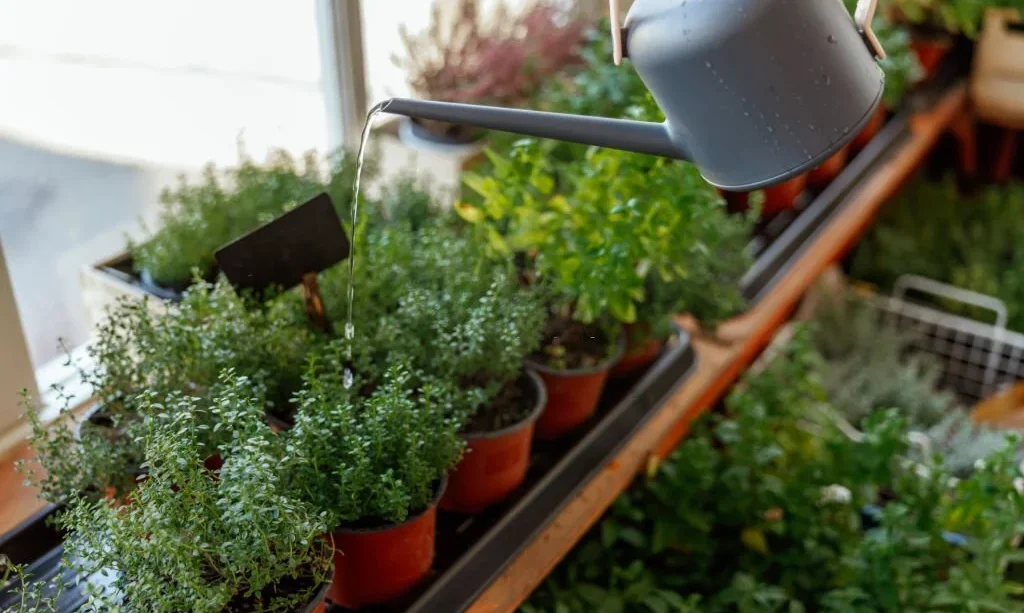Let’s take a journey today into the aromatic world of thyme. This lovely herb, famous for its culinary and medicinal uses, is a delight to grow in your garden or windowsill. One important aspect of caring for thyme, and indeed any plant, is watering. But how often should you water thyme? Let’s dive into this topic and unravel the mysteries of thyme’s hydration needs.
- For more nutritious and tasty vegetables
- Optimum levels of primary plant nutrients
- Contains no GMOs, chicken manure or sewage sludge
- Feeds for several months
- Made with 100% organic and natural ingredients
Thyme’s Water Needs
Did you know that thyme is quite the little survivor? It’s a Mediterranean herb, which means it’s used to hot, dry climates and doesn’t need a lot of water to thrive.
- A Drought Tolerant Herb: Thyme has a high tolerance for drought, thanks to its deep-rooting system. It’s like the camel of the herb world! This means it’s more forgiving if you forget a watering session or two.
- The Goldilocks Zone: Just like Goldilocks in the famous children’s story, thyme likes its water just right—not too much and not too little. Too much water can cause its roots to rot, while too little water can make it wilt and die. Finding the right balance is crucial for a happy, healthy thyme plant.
Understanding the water needs of thyme is the first step to providing it with the right care. But how often does this translate to watering in practical terms? Let’s find out in the next section!
- Tiny, strongly aromatic & flavorful evergreen leaves
- Garden use: herb garden, flower border, containers
- Culinary use: in bouquet garni, aromatic dishes
- Plant in full sun to partial shade for the best yields
- Plant during spring & fall
How Often to Water Thyme
Now that we know thyme doesn’t need a ton of water, let’s figure out the perfect watering schedule.
- It Depends: The frequency of watering thyme can depend on many factors, like the weather, the type of soil, and the size of the pot if you’re growing it indoors. As a general rule, it’s best to let the top inch of the soil dry out between waterings. This usually means watering once every one to two weeks.
- Listen to Your Thyme: Your plant will tell you when it’s thirsty. If its leaves start to wilt or turn a dull green, it’s time for a drink. On the other hand, if the leaves turn yellow or the plant looks soggy, you might be overdoing it.
Signs of Improper Watering
Mis-watering your thyme can lead to some noticeable signs. Here’s what to look out for:
- Too Much Water: If your thyme plant’s leaves are turning yellow, or it looks generally unwell, you might be giving it too much water. This can lead to root rot, a serious problem that can kill your plant if not addressed promptly.
- Not Enough Water: On the other hand, if the leaves are wilting, browning at the edges, or falling off, your thyme might be crying out for more water.
Remember, every plant is unique and it’s crucial to observe your thyme plant closely to understand its specific needs. Our next section will offer some tips to water your thyme effectively.
Tips for Watering Thyme
Watering might seem like a straightforward task, but with thyme, there are some tips to make it even more effective:
- Less is More: When in doubt, always lean towards underwatering rather than overwatering. Thyme can recover from a little drought, but it’s much harder for it to recover from root rot caused by too much water.
- Deep Watering: When you do water your thyme, make sure to water it deeply. This encourages the roots to grow strong and deep, making the plant more resistant to drought.
- Seasonal Changes: Pay attention to seasonal changes. Thyme needs less water in cooler months when it’s not actively growing.
Conclusion
And that’s the scoop on watering thyme! By understanding its water needs and watching for signs of mis-watering, you can create a thriving environment for your thyme plant. Remember, proper watering is more of an art than a science, and every plant may have its unique requirements. But don’t worry—with a bit of observation and care, you’ll become a master at watering thyme. So, keep up the great work, and let your thyme flourish under your excellent care!





